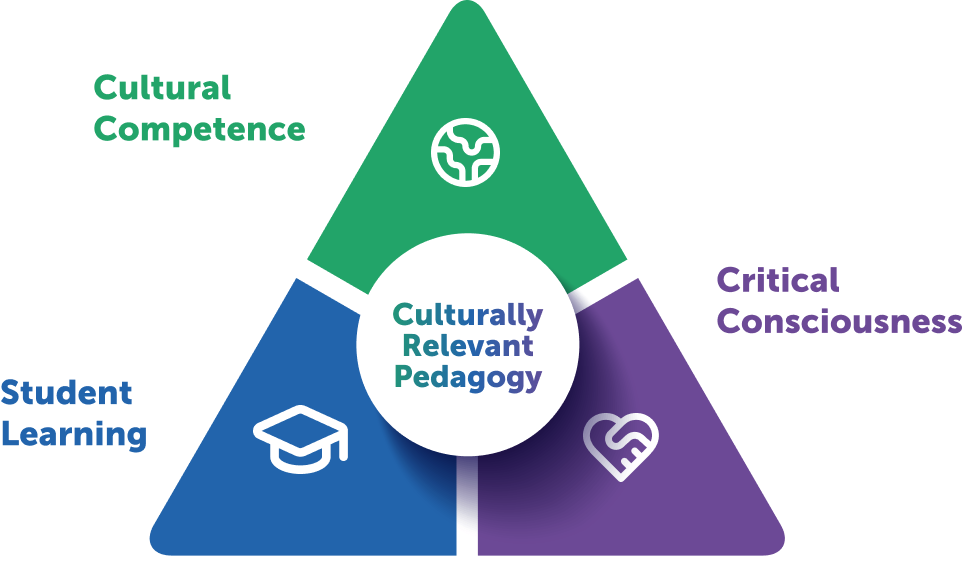Practical steps to implement Culturally Responsible Pedagogy and Culturally Sustaining Pedagogy

Image Source: https://learnwithsap.org/resources/planning-and-reflecting-with-culturally-relevant-pedagogy/
Practical steps to implement Culturally Responsible Pedagogy and Culturally Sustaining Pedagogy
Place: Business School
Purpose: develop a program that facilitates success for all students where each student language and culture shape the curriculum and values of the school. The following steps would allow students to experience culture as a daily experience (Fillerup, 2008) and help them build their own identity and global consciousness.
Academic success
- Continually assess (through surveys, focus groups, in-depth interviews) the perceptions of international and indigenous students related to how the curriculum and assessments adapt to their own learning needs and use those results to modify the curriculum and assessments.
Cultural competence:
- Offer courses taught in non-English language
- Promote learning of language courses inside and outside the school, including those in danger of extinction (credits earned in language courses could be transferred towards the students’ degree and earn them points when applying for international exchange).
- Include international and indigenous theory, business cases and speakers to each course.
- Encourage international and indigenous students to present in-class cases or theoretical frameworks from their own backgrounds.
- Provide scholarships (as those offered to athletes) for international and indigenous students with special artistic skills that are connected to their own background (like the example of Hip-hop in the readings)
Sociopolitical Consciousness:
- Include daily practices/rituals of indigenous and international students like the morning circle, dancing (Latins), yoga and meditation (Indians).
- Include in Social Impact/Equity courses, a project designed for students to provide critical perspectives on policies and practices that may have a direct impact in lives and communities of students (,)
- Incorporate indigenous and international values to the mission and the culture of the school, for example close long-lasting relationships among native towns or collectivistic vs. individualistic practices in teams.
References:
Ladson-Billings, G. (2014). Culturally Relevant Pedagogy. Harvard Educational Review, 84(1),2014,74-84.
McCarty, T.L., & Lee, T.S. (2014). Critical Culturally Sustaining/Revitalizing Pedagogy and Indigenous Education Sovereignty”. Harvard Educational Review, 84(1), 101-124.
Fillerup, 2008, as cited in McCarty and Lee, 2014.

Comments
Post a Comment